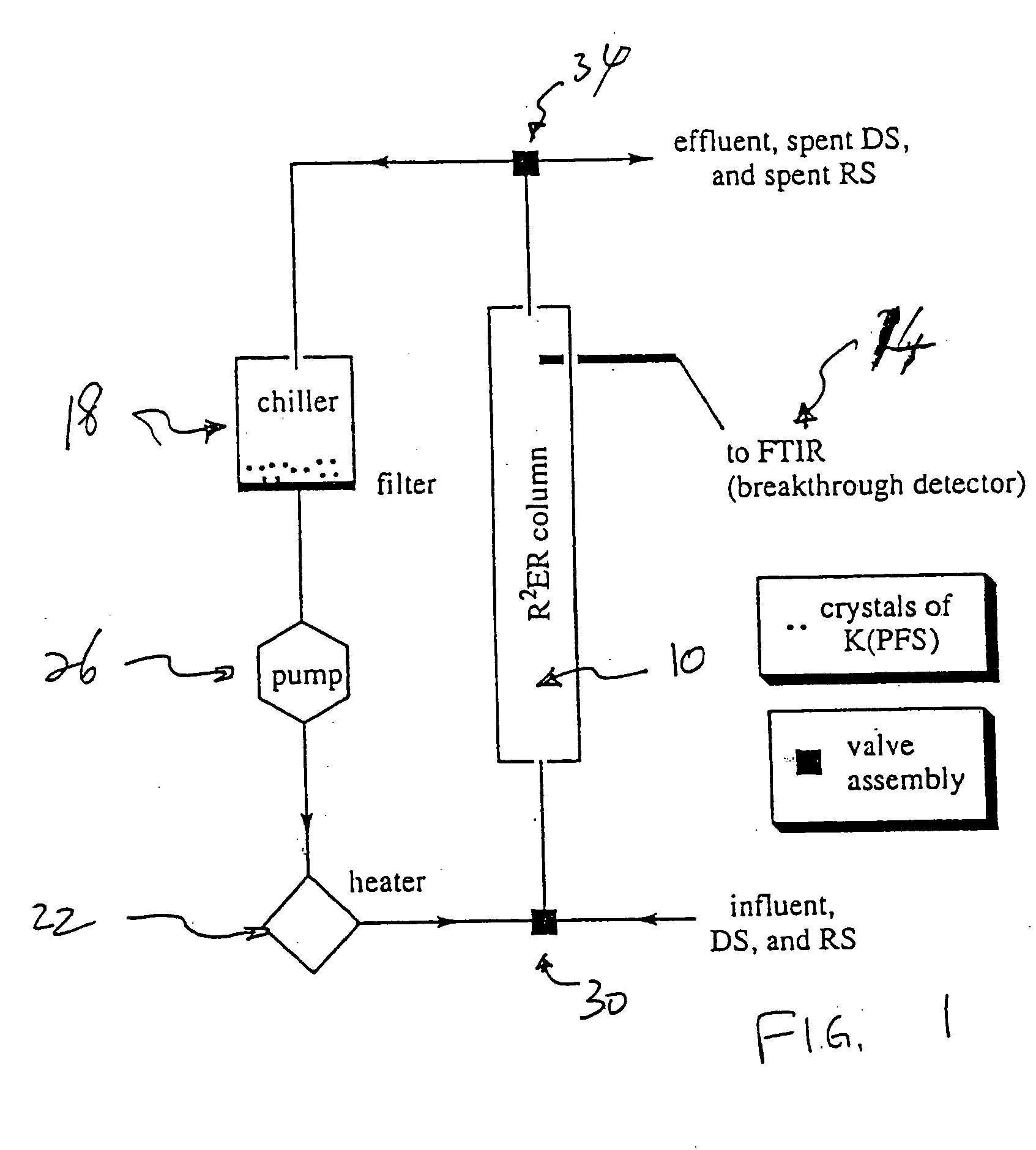Extraction and recovery of ions from a solution
a technology of solid ions and extraction methods, applied in the direction of ion exchangers, water/sewage treatment by ion exchange, separation processes, etc., can solve the problems of undesirable recovery process, undesirable pollutants, inability to easily remove water or destroy by simple chemical or thermal process, etc., and achieve the effect of different solubility
- Summary
- Abstract
- Description
- Claims
- Application Information
AI Technical Summary
Benefits of technology
Problems solved by technology
Method used
Image
Examples
experiment 1
[0051] This experiment illustrates a method for coupling a silane compound to vinylferrocene.
[0052] A variety of silane compounds were coupled to vinylferrocene using different catalysts as shown below:
[0053] Some of the results are shown on Table 1.
TABLE 1Vinylferrocene Hydrosilylation ResultsSilanecatalystaamt. of catalystb% yieldcHSiCl3Karstedt's0.08% to 1.6%no rxn.HSi(CH3)2(OEt)Karstedt's0.24%67%HSi(CH3)(OEt)2no catalyst0no rxn.HSi(OEt)3Karstedt's0.40%27%HSi(OEt)3Speier's0.02%17%HSi(OMe)3Karstedt's0.16% to 1.6%d
aKarstedt's catalyst was purchased as a 2-3% platinum solution (by weight) in xylenes from United Chemical Technologies, Inc. (Bristol, PA) and was assumed to be 2.5% platinum with a solution density of 0.88 g / mL; Speier's catalyst was purchased from Aldrich (Milwaukee, WI) and dissolved in 2-propanol and used as a 0.01 M solution.
bValues are expressed as mole percent platinum relative to the starting amount of vinylferrocene.
cPercent yields given are approximate. ...
experiment 2
[0056] This experiment illustrates the solubility of PFS salts at a different water temperatures.
[0057] A 57 mg sample of FC-95 (a mixture of five potassium salts of PFS anions) from 3M company (St. Paul, Minn.) was mixed with 30 mL of water at 23° C. After vigorous mixing, the mixture contained a saturated solution of FC-95 and a considerable amount of solid FC-95. The mixture was heated to 80° C., whereupon all of the solids dissolved. The mixture was then cooled to about 0° C., whereupon white crystals precipitated. The mixture was filtered cold and the crystals were dried to yield 32 mg of solid. The filtrate was concentrated in vacuum to yield 25 mg of white solid.
experiment 3
[0058] This experiment illustrates the thermal stabilities of 1,1′3,3′-tetrakis(2-methyl-2-hexyl)ferrocene (HEP) and 1,1′3,3′-tetrakis(2-methyl-2-hexyl)ferricenium cation (HEP+).
[0059] A samples of HEP and HEP+N3− were added to water and the resulting mixture was heated to 80° C. for several days. There was no visible degradation of either material when compared with control samples treated with water at 23° C. for the same length of time.
PUM
| Property | Measurement | Unit |
|---|---|---|
| temperature | aaaaa | aaaaa |
| temperature | aaaaa | aaaaa |
| temperature | aaaaa | aaaaa |
Abstract
Description
Claims
Application Information
 Login to View More
Login to View More - R&D
- Intellectual Property
- Life Sciences
- Materials
- Tech Scout
- Unparalleled Data Quality
- Higher Quality Content
- 60% Fewer Hallucinations
Browse by: Latest US Patents, China's latest patents, Technical Efficacy Thesaurus, Application Domain, Technology Topic, Popular Technical Reports.
© 2025 PatSnap. All rights reserved.Legal|Privacy policy|Modern Slavery Act Transparency Statement|Sitemap|About US| Contact US: help@patsnap.com



